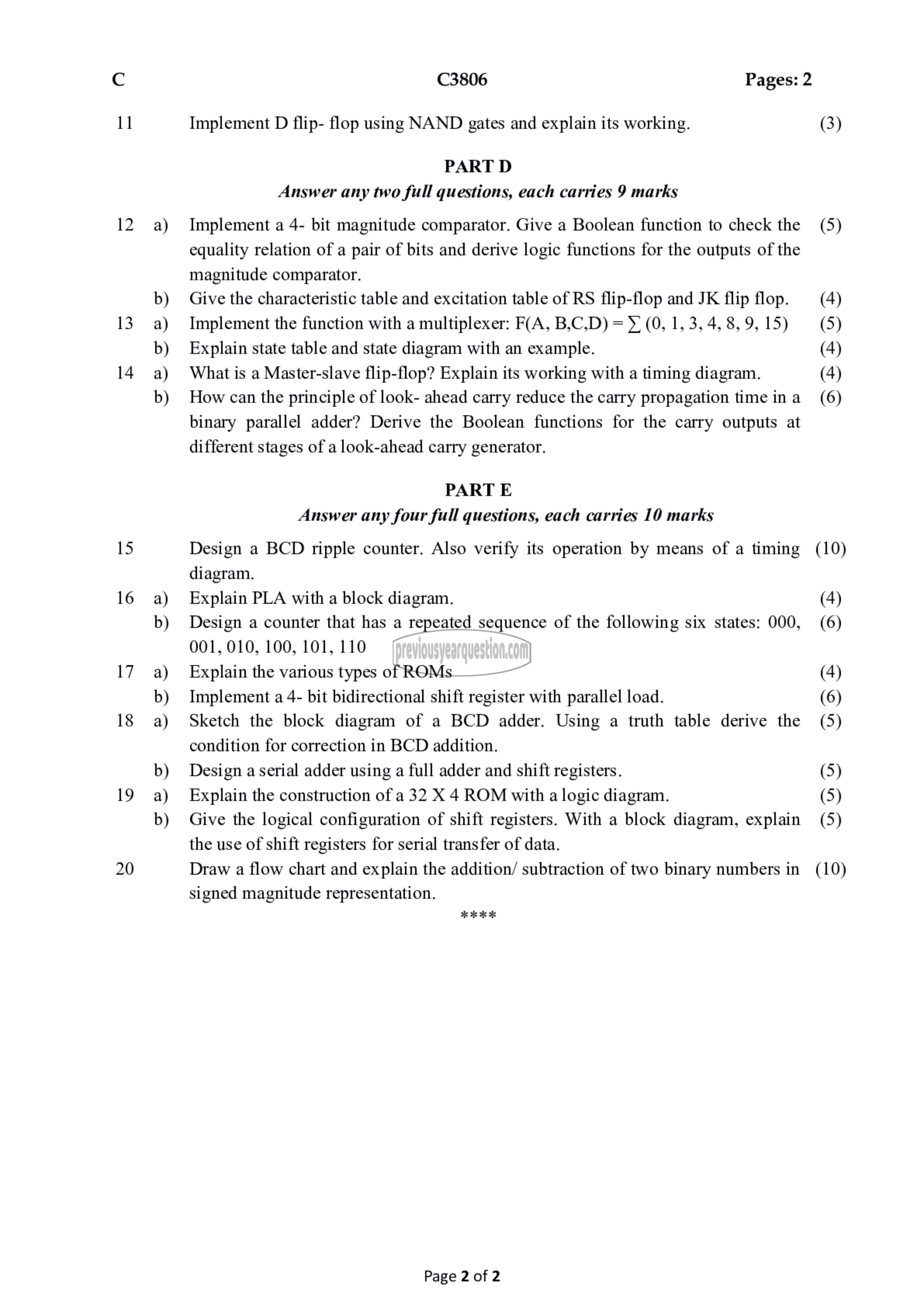APJ ABDUL KALAM TECHNOLOGICAL UNIVERSITY Previous Years Question Paper & Answer
Semester : SEMESTER 3
Subject : Switching Theory and Logic Design
Year : 2018
Term : APRIL
Branch : COMPUTER SCIENCE AND ENGINEERING
Scheme : 2015 Full Time
Course Code : CS 203
Page:2
11
12
13
14
15
16
17
18
19
20
a)
b)
a)
b)
a)
b)
a)
b)
C3806 Pages: 2
Implement D flip- flop using NAND gates and explain its working.
PART D
Answer any two full questions, each carries 9 marks
Implement a 4- bit magnitude comparator. Give a Boolean function to check the
equality relation of a pair of bits and derive logic functions for the outputs of the
magnitude comparator.
Give the characteristic table and excitation table of RS flip-flop and JK flip flop.
Implement the function with a multiplexer: F(A, B,C,D) = ¥ (0, 1, 3, 4, 8, 9, 15)
Explain state table and state diagram with an example.
What is a Master-slave flip-flop? Explain its working with a timing diagram.
How can the principle of look- ahead carry reduce the carry propagation time in a
binary parallel adder? Derive the Boolean functions for the carry outputs at
different stages of a look-ahead carry generator.
PARTE
Answer any four full questions, each carries 10 marks
Design a BCD ripple counter. Also verify its operation by means of a timing
diagram.
Explain PLA with a block diagram.
Design a counter that has a repeated sequence of the following six states: 000,
001, 010, 100, 101, 110
Explain the various types of ROMs
Implement a 4- bit bidirectional shift register with parallel load.
Sketch the block diagram of a BCD adder. Using a truth table derive the
condition for correction in BCD addition.
Design a serial adder using a full adder and shift registers.
Explain the construction of a 32 % 4 ROM with a logic diagram.
Give the logical configuration of shift registers. With a block diagram, explain
the use of shift registers for serial transfer of data.
Draw a flow chart and explain the addition/ subtraction of two binary numbers in
signed magnitude representation.
11,
Page 2 of 2
(3)
(5)
(4)
(5)
(4)
(4)
(6)
(10)
(4)
(6)
(4)
(6)
(5)
(5)
(5)
(5)
(10)
